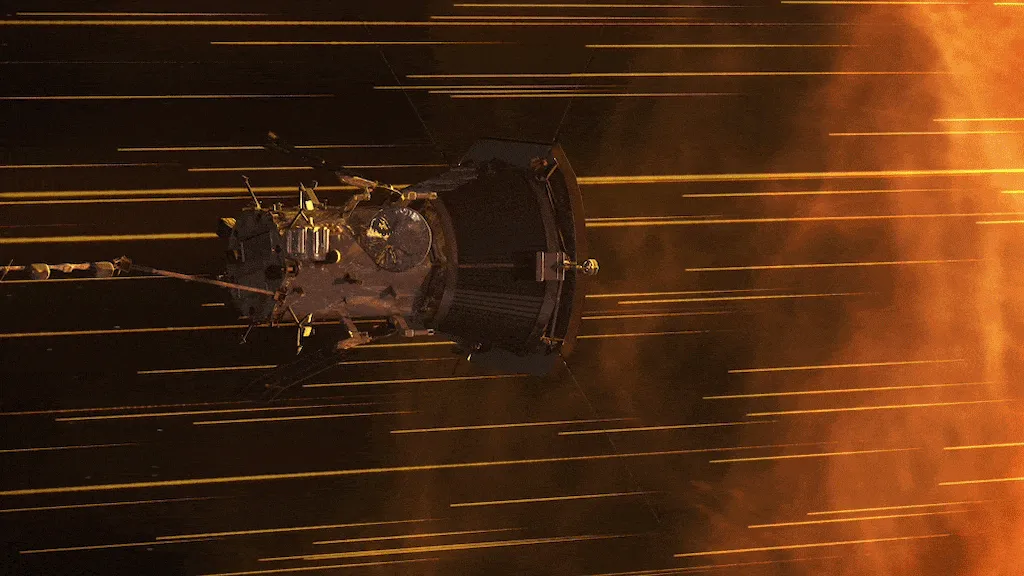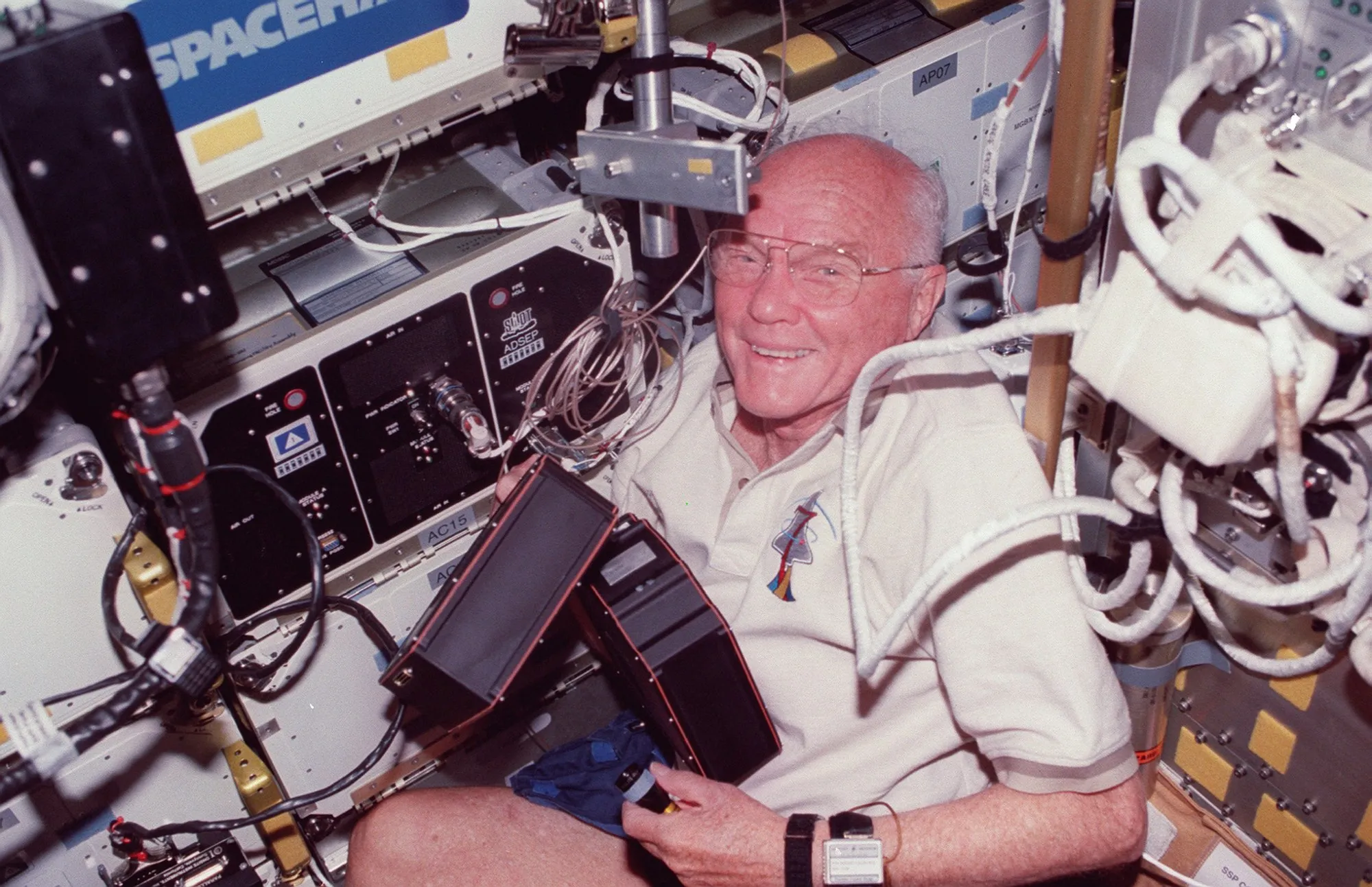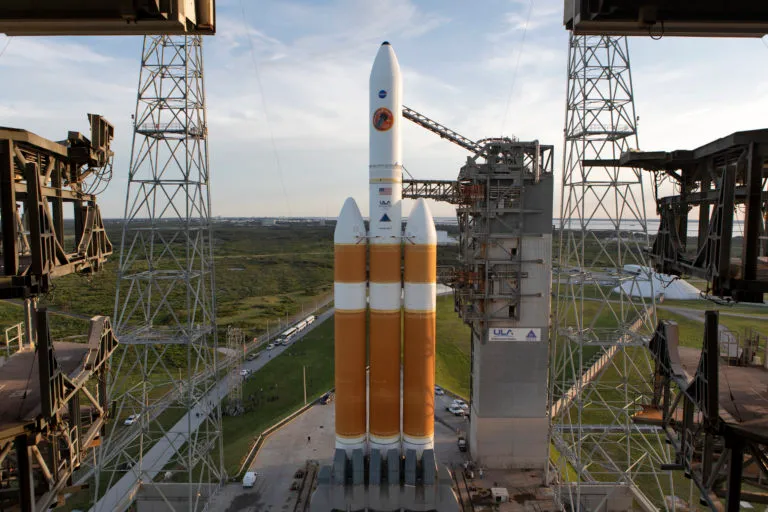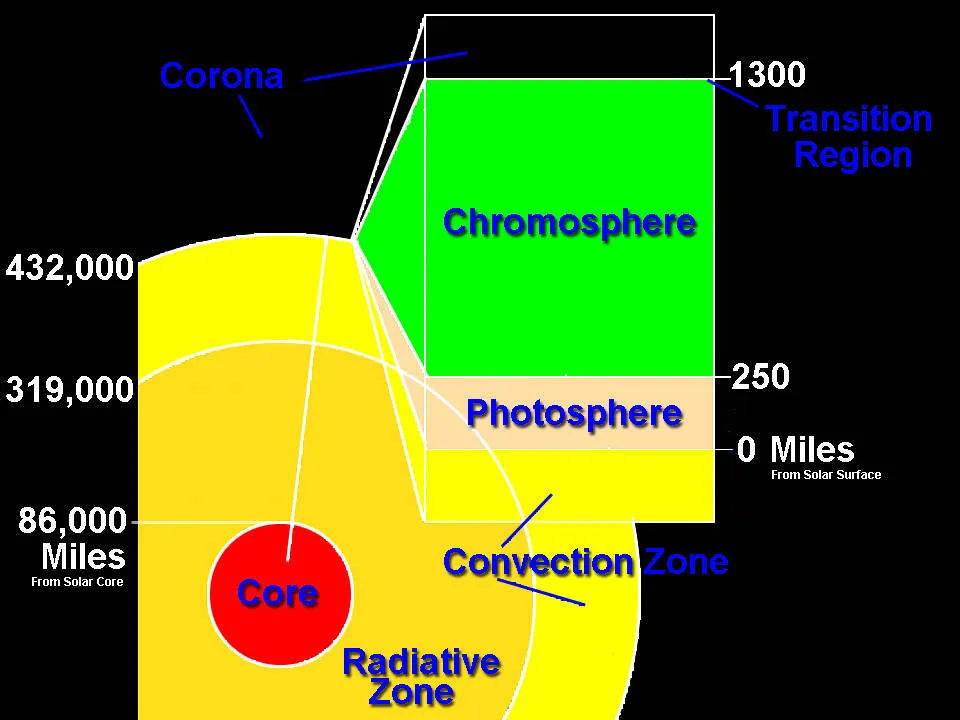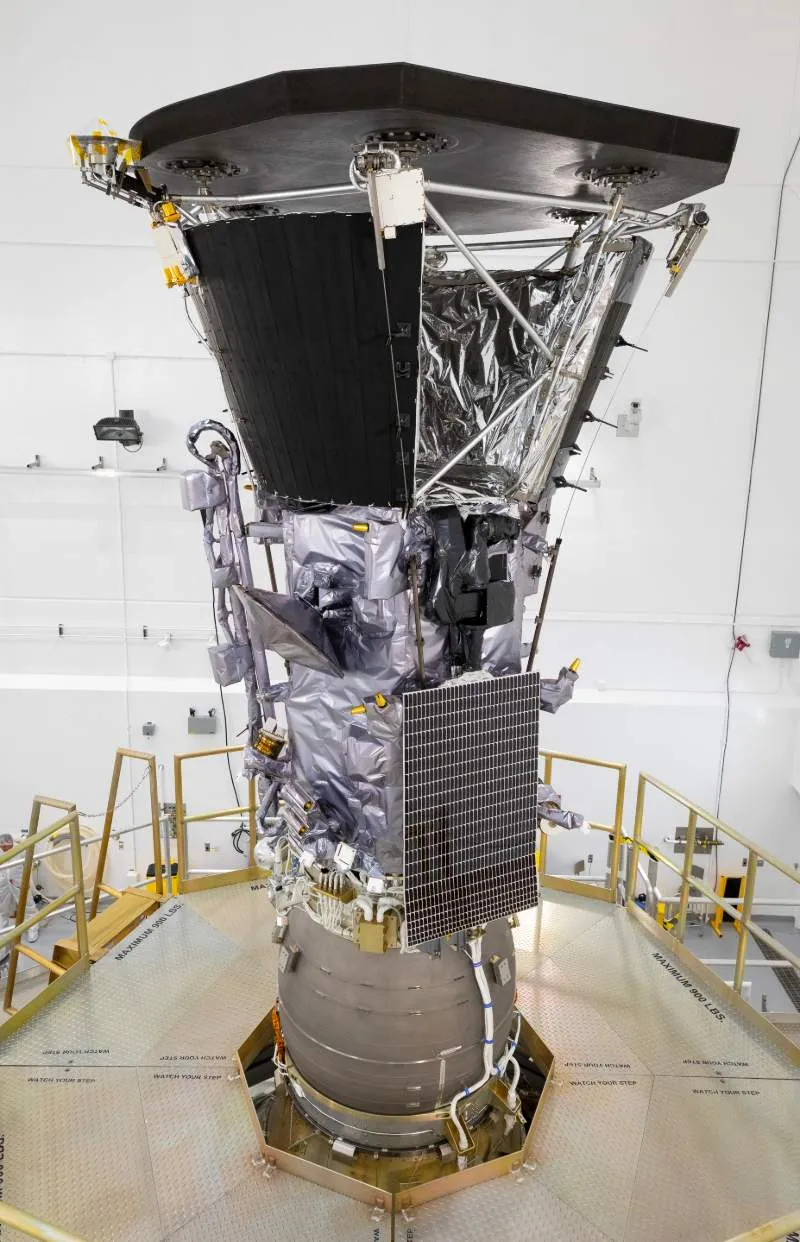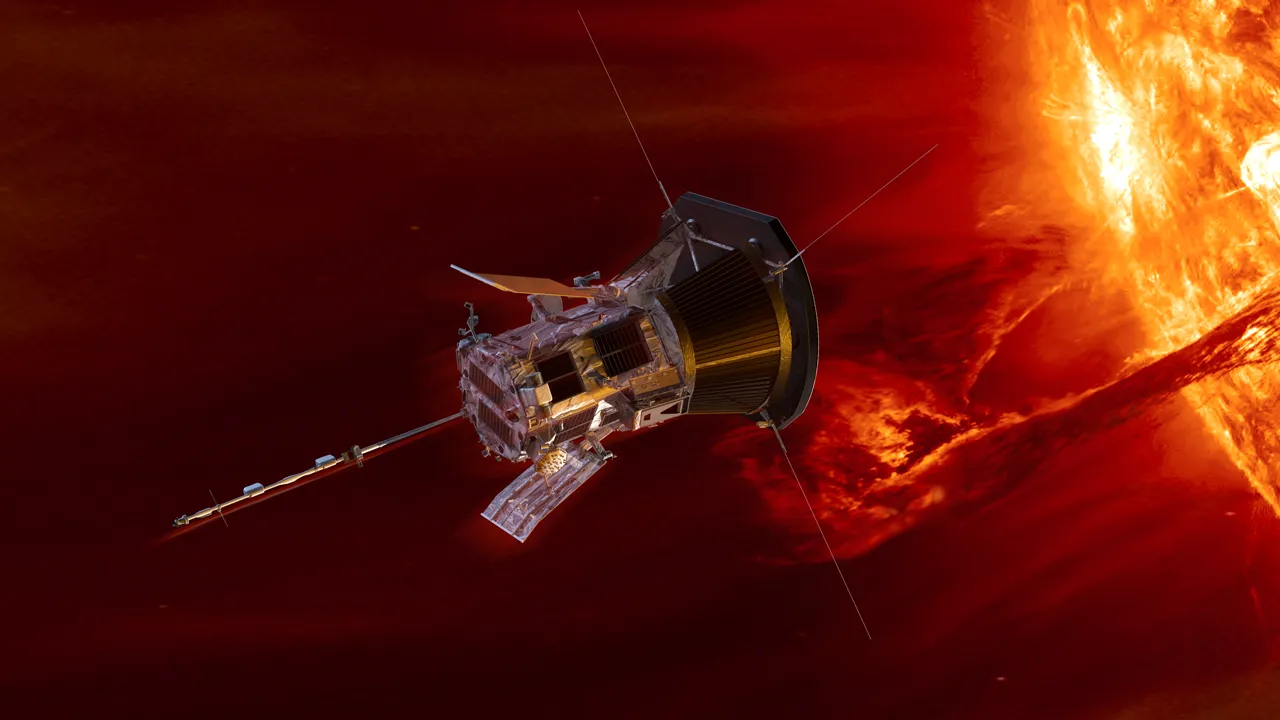For the first time in history, a spacecraft has touched the Sun. NASA’s Parker Solar Probe has now flown through the Sun’s upper atmosphere – the corona – and sampled particles and magnetic fields there, NASA, December, 14, 2021
Ahaa, I am so sure to an extent that @lemouth and other experts and lovers of astrology, physics and energy related discipline will love this. Shockingly it is coming from my end. As a researcher, I am always curious and inquisitive and always ready to go any length in finding an answer to questions that bother me.
Today, the question is why and how is that the probe is able to orbit within the corona of the sun and hasn't melted. Today, my curiosity has landed me into space. Indeed quest for knowledge can take you into any field, as it is throwing me into astrology right now. I don't know if that is the right discipline to use, I await corrections later on.
As I was surfing the internet today, I got so interested in reading about this NASA probe that was launched into the space with the aim of studying the sun. When the news of the successful launch of this probe broke out, I was just marvelled at the ingenious efforts of US scientists. Never giving up and never relenting.
It reminds me of one of the movies I so much loved - Hidden figures. The movie was the story about some real life noble achievers (Three female African-American mathematicians) and how they played a key role in helping astronaut John Glenn's launch into orbit through their ingenious calculations. John Glenn happens to be the very first American to orbit the Earth three consecutive times by circling it in the year 1962.
The mere thought that the Russians were able to get to the space before US was one of the major instigator in the quest by USA then. Just ranting anyways, I might be wrong with my assumption but the narrative proves me right. Regardless, today, alot of amazing things are happening in the space and we get to know them through the consistent efforts of astronauts. The movie is a must watch if you really love science and discoveries. That aside, lets see if we can answer my question through some research.
On August 2018 in Florida, NASA launched its parker solar probe with a main intention for its to fly to reach the corona and possibly touch the sun. On Tuesday, 14th of Dec 2021, the announcement that, the Parker probe of the NASA's mission to the sun has touched the sun was made at a conference of the American Geophysical Union on Tuesday 14th Dec 2021. The report of this probe finally touching the sun since it is a launched got me thinking seriously, what could have been behind the probes sustenance.
Hmm, a better understanding of what it means to touch the sun definitely will be needed later on and we will sure get to understand as well because to me, it seemed, an impossible thing to do considering my little understanding of the nature of the sun. The news released by on by NASA So these were the main core mission and objectives of NASA from the few run around I did on their site. They so far have it that:
•That the solar probe will help revolutionize human understanding of the sun
•The problem will fly deep into the sun's atmosphere surrounding the sun, which is known as corona for the first time ever. Don't confuse this with coronavirus, haha.
•The probe will be the first ever spacecraft to get that close to the sun than any other spacecraft has ever done. That is, the Parker Solar Probe will come within about 3.83 million miles (8.86 solar radii) of the Sun’s surface on its closest approach in 2024.
•The spacecraft will use some four instruments to observe and study the magnetic and electric fields, plasma, and energetic particles, as well as take an image of the solar wind.
•The probe will help explorer those various aspects of life as it relates to the sun and Earth and how it affects man.
•The mission will help monitor and find out how energy flows through the solar corona and also what facilitates both the solar energetic particles and the solar wind (the constant stream of particles flowing from the sun) and in the process of doing this, the take advantage of them to predict changes in the space and how these changes can influence human existence. Solar wind has been reported to posses the power of triggering magnetic storms that has dangerous effects on statelites, the human astronauts themselves and the power grids that generates the electricity used in space. So an in-depth study of sun will unravel alot.
Take for example, in December 2019, this probe was able to discover that magnetic zig-zag structures called switchbacks are very much abundant within the solar wind as it goes closer to the sun. So far, this probe has gone half way into finding out how these structures are formed and from where they originate - the solar surface. Indeed, a new knowledge and discovery added to science.
The rocket standing on the pad at Space Launch Complex 37 is a United Launch Alliance Delta IV Heavy configuration. The 233-foot-tall rocket is the world’s second highest-capacity rocket and most powerful rocket currently used by NASA
I really find all the above very intriguing and hopeful that they fully accomplished. By successfully launching this probe into the space on On August 2018 and this probe for the first time in history getting into the atmosphere of the sun, the objectives, goals and vision of NASA are really not farfetched and thus can be said to be a dream come true.
So how on earth is this probe survive the massive heat of the sun of about 27 million degrees Fahrenheit (15 million degrees Celsius), and to the point that it even entered its atmosphere - the corona. To me, this is defying odds and a recording breaking event. Let's quickly study the sun in another dimension. Remember, I am in no way, an expert in this areas, I am only sharing my findings. Feel free to correct me through constructive argument or suggestions in the comment section, it will be highly appreciated.
The sun
If I could recall vividly, the universe is made up of 9 planets (though research has shown that it is more than 9, but not much of my concern for now) ranging from the Mercury (the hottest), Venus, Earth, Mass Jupiter Saturn, Uranus, Neptune and Pluto (the coldest) and all this natural body orbit round the sun which is centrally placed.
The sun is the largest and most massive object in the solar system. It is about 93 million miles (149.5 million km) from Earth. That distance is called an astronomical unit, or 1 AU, and is used to measure distances throughout the solar system. The sun's light and heat takes about eight minutes to reach us, which leads to another way to state the distance to the sun: 8 light-minutes.
The sun has been studied for years and one of the things that so far limited its in-depth study like every other natural body is unattractive massive heat it generates that virtually no instrument produced by mankind has been able to withstand not until now. At the core of the sun, is the engine room for the heat generation.
The sun is made up of two major layers - the inner inner layer that is made up of the core, radiative zone and convection zone while the second/outer layer is made up of photosphere, chromosphere, the transition region and the Corona.
The photosphere is undoubtedly the deepest layer of the sun that can 'easily' be studied and it has the characteristics of being covered with granulations and with a temperature range of 3700 degrees Celsius at the top and 6200 degrees Celsius at the bottom of it. Atleast this temperature range is fair compared to that within the core.
After this layer, next in line is the chromosphere which has its own unique attribute together with the remaining outer layers- in these layers, the farther you go away from the sun, the hotter it becomes, unlike in the lower layers (the closer you go, the hotter it becomes). This is layer appears red in colour due to the abundance of hydrogen in it according to the report of National space observatory
This layer has a temperature minimum of 3700 degrees Celsius at the bottom and 7700 degrees Celsius at the top. This is kinda weird, regardless, it's a fact. I guess anyone with better understanding can help out here.
Between the chromosphere and the next outermost layer of the sun - corona, lies a thin layer refered to as the transition region. It is an irregular layer of the Sun's atmosphere that separates the hot corona from the much cooler chromosphere and the corona (the Sun's outer atmosphere). Within this region, the remarkable thing is the abrupt rise in the temperature of the sun from 7700 to 500,000 degrees Celsius, waoooooo! Indeed, the farther you go, the hotter it is. The outermost layer, which bothers mostly round our discussion is the Corona - the outermost layer of the sun that the NASA'S Parker probe was able to touch.
The corona layer also has its own unique attribute and this is the fact that it is not readily visible with the naked eyes except during total solar eclipse or with the use of an instrument known as the coronagraph. It's temperature is measured to be 500,000 degrees Celsius, whoops! Is this what the probe is currently withstanding, waoooooo! I am more than amazed at this point. Now we know, the temperature and fully understand structure of the sun. How then is this heat generated and transmitted?
Aside the above listed layers, the sun also produces other things that emanates from it either as gas, radiation, or molten form etc.
Beyond the corona is the solar wind, which is actually an outward flow of coronal gas. The sun's magnetic fields rise through the convection zone and erupt through the photosphere into the chromosphere and corona. The eruptions lead to solar activity, which includes such phenomena as sunspots, flares, prominences, and coronal mass ejections
Because of the danger posed by the solar wind and the great magnetic field of energy it carries as it blows towards other planet and case in point the earth, scientist were able to discover these and thus resulted in the use of Aluminum in the production of most space equipment. Aluminum was found to have a high shielding effect against the magnetic field energy and high energetic particles of the sun. Now it is clearer why most of the equipment are made of aluminum.
Though there are particles reportedly to travel at 80 percent speed of light that can smash into statelites and cause signal jam or damages, but the impact might not be much devastating since Aluminum will to a great extent reduce it. Once could only imagine what would happen if other metals are used. Let's briefly take a look at how the sun generates it's energy.
Mechanism of solar wind formation and Heat generation by the sun
The heat generation from the sun all begin from its innermost layer - the core. It produces its heat through the process of Nuclear fusion (coming together of two light elements to form a heavier one) and this nuclear fusion leads to the generation of heat that radiates out from the core of the sun to the it's outer part. This nuclear fusion is brought about by the collision of hydrogen atoms to produce helium.
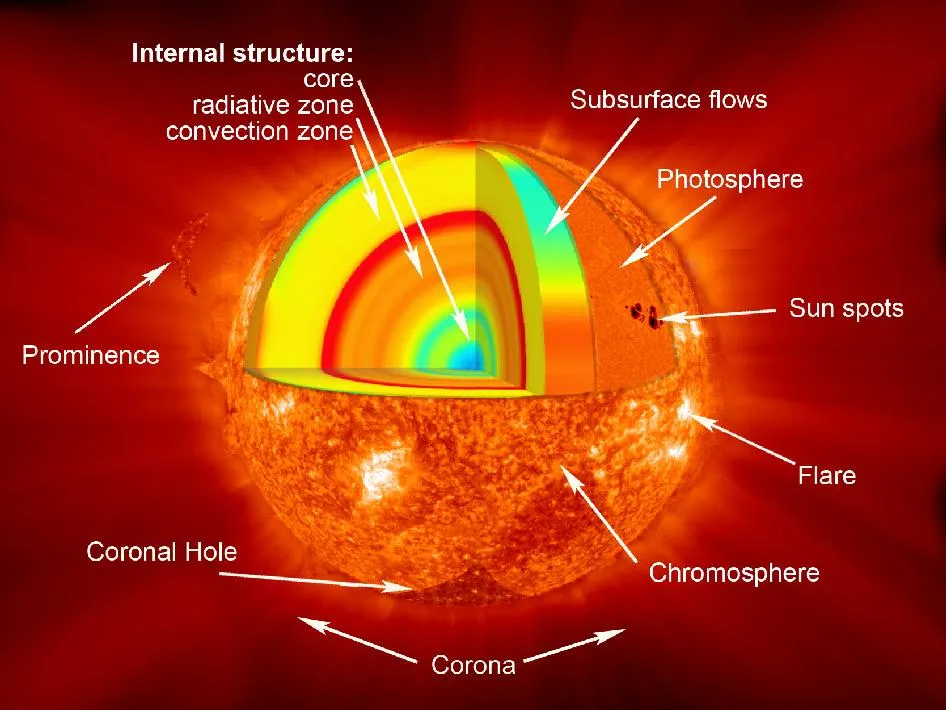 The sun core and it's layers; NASA
The sun core and it's layers; NASA
From the core of the sun, the energy moves to the radiative zone, where it bounces around for up to 1 million years before moving up to the convective zone, the upper layer of the sun's interior. The temperature here drops below 2 million degrees Celsius. Large bubbles of hot plasma form a soup of ionized atoms and move upward to the photosphere.
Unlike other planets and case in point, the earth, the sun doesn't have any solid surface, rather it has a highly superheated environment that is made up of solar materials which are held to it by the action of both magnetic field forces and gravitational force.
https://youtu.be/LkaLfbuB_6E NASA
As the parker probe travels across the corona, it is currently revealing more and more information. If this sun and it's solar wind are so powerful as we have seen so far, how then is this probe surviving within corona.
How is the core able to withstand the sun's temperature?
How the Parker probe is able to withstand the whooping 500,000 degrees Celsius temperature of the corona atmosphere, is the most intriguing aspect as far as I am concerned. There must be surely some components or probably some models that gives it such resiliency.
So far, it is clear that this probe is currently orbiting the sun at hundreds of thousands of miles per hour and through the assist of gravity, it is gradually getting closer and closer to the sun. As it gets closer, it's gets hotter obviously and according to report, for this probe to get that close, to the point if touching the sun, it will experience over ×475 solar heat intensity of what it could experience if it were orbiting the Earth. Just imagine that!
After surfing and romancing the NASA website and several blogs, I can say finally say eureka!!! This is actually the most interesting part for me because I can finally lay to rest my curiosity.
The parker probe is protected through several layers of state of the art shields that is 4 and half inches depth and made up four basic layers or components namely:
•Carbon foom (directly attached to the probe itself) •Carbon-Carbon •Barrier coating and •White Ceramic coating (part facing the sun directly)
These shields are able to withstand a temperature range of over 14,000 degrees Celsius and not only that, you may wonder, is it only the surface that is shielded, what of other critical components of the parker probe, what happens to them.
Well, the shield was designed in such a way that it also protects all the external components of its external components and interestingly maintains them at room temperature of about 25-30 degrees Celsius, waooooooo!!! One could only imagine, the ingenuity of these scientist and physicists at the John Hopkins Applied Physics laboratory.
It doesn't stop there, the probe is also designed with a water array solar cooling system that maintains the other components of the probe that are susceptible to heat and without which this probe will not work nor even withstand the sun.
Note at at this point that, the heat shield must remain pointed to the sun for efficiency, if not, it is all going to crumble. So in essence, the side and internal components of the are at the mercy of the heat Shield constantly facing the sun as it orbits at all times.
Another issue was the electrical wiring, which would melt if exposed to heat radiation at such close proximity to the Sun. The scientists developed sapphire crystal tubes to suspend the wiring, and niobium wires were used to make the connections
Are you thinking what I am thinking right now? So what of the effects of the solar winds and the Corona materials, don't they have effect on the probe. They practically have no effects because the parker probe was designed with an autonomous mechanism that protects it even with the touch these natural bodily particles.
This probe also has sensors that detect when the probe is going in the wrong direct around the sun and it's able to readjust itself to make sure that the shield remains focused on the sun ray.
At this point I have quenched my huger. This is as far as I can go, there are more complex systems that play out behind the scene and I don't think I have enough knowledge to fully discuss them.
By conclusion, I would say, this is a record breaking achievement to the science community and all thanks to the great scientists, physicists out there. With these, we can know more about the sun and how it truly affects our lives. This probe will sure give us more information in time to come.
Whoops, I am back from NASA, what a journey. Interesting journey I must say. Until I come your way again, stay awesome. Thanks for reading!
PS: NASA images are free for use provided you reference them
References •NASA probe inside solar corona has not melted •The parker solar probe mission •How NASA probe touched the sun •NASA; The sun layers •Nuclear fusion •The planets •How hot is the Sun •NASA Enters the Solar Atmosphere for the First Time, Bringing New Discoveries •Parker Solar Probe Completes a Record-Setting Swing by the Sun
Return from Random thoughts: Why has NASA parker solar probe not melted yet inside the sun? to cyprianj's Web3 Blog

